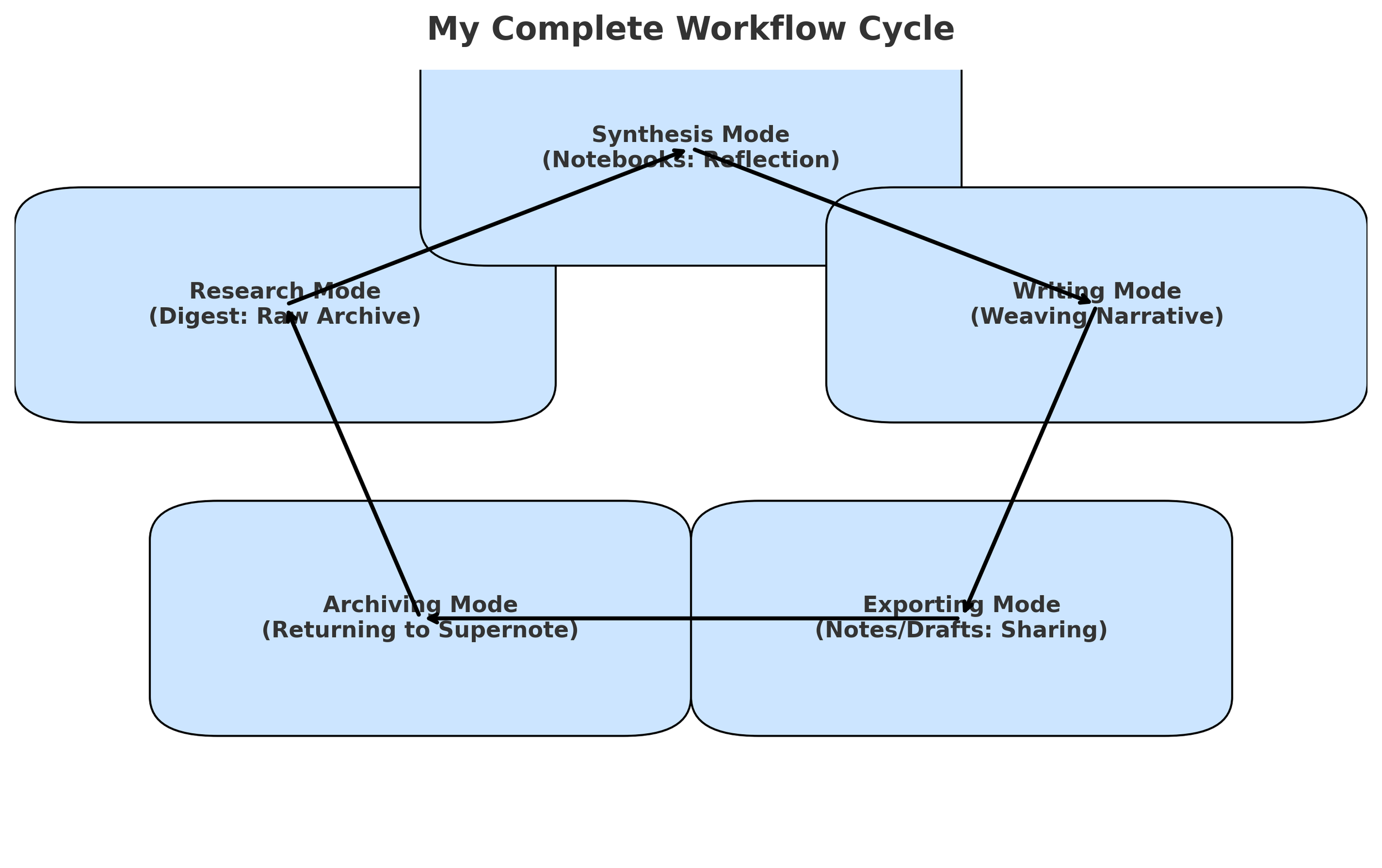Introduction to Workflow Modes
Over the years, I’ve experimented with dozens of tools and methods for capturing ideas, processing information, and producing finished writing. But what I’ve discovered is that my work follows a natural rhythm — a five-step cycle that repeats no matter what project I’m working on.
That cycle is:
Research – Gathering raw fragments.
Synthesis – Connecting fragments into meaning.
Writing – Weaving meaning into narrative.
Exporting – Moving drafts outward to be polished or shared.
Archiving – Bringing completed work back home into my system.
This five-step process has become the backbone of how I use my Supernote and its Digest App. It’s more than just note-taking; it’s a workflow that allows me to move from scattered inputs to lasting, meaningful outputs.
Why a Workflow Matters
When I tried to do everything in one space — capture, reflect, write, and publish — my notes became cluttered and my writing process felt overwhelming. Separating my work into distinct modes gave me clarity.
I don’t need to reflect while I’m still gathering.
I don’t need to polish while I’m still writing.
I don’t lose track of finished work because it always comes back to the archive.
By clearly defining these five steps, I can also designate time to each one accordingly. I use the Pomodoro method to keep myself anchored in whichever mode I’m in, which helps me focus deeply without drifting into another stage too early.
The hardest challenge in this workflow is resisting the temptation to blend steps — like editing while writing, or reflecting while still capturing. Sticking to the boundaries is what makes the process powerful.
Each step has its role, and together they form a complete loop.
The Five Steps
Here’s how each stage fits into the cycle:
1. Research Mode
Everything begins with fragments. I capture quotes, references, and clippings in the Digest App, treating it as my raw archive.
👉 Read more about Research Mode
2. Synthesis Mode
Once the archive grows, I move into my notebooks to reflect, connect, and draw out patterns. Digest stays as reference while my notebooks become the canvas for meaning.
👉 Read more about Synthesis Mode
3. Writing Mode
When patterns are clear, I weave them into a cohesive draft. This is where Digest (evidence) and notebooks (insight) converge into narrative.
👉 Read more about Writing Mode
4. Exporting Mode
Drafts don’t stay inside Supernote. I export them into Notes or Drafts, where they can be polished, shared, or prepared for publishing. Exporting ensures my private work moves outward.
👉 Read more about Exporting Mode
5. Archiving Mode
The cycle closes when I bring finished pieces back into Supernote. Archiving turns my system into a living library — not just a workspace for fragments, but a home for completed work.
👉 Read more about Archiving Mode
Closing Reflection
This five-step workflow mirrors the way I think and create. By separating the stages, I give myself permission to focus fully on each part: gathering, connecting, weaving, releasing, and preserving.
It’s not just about producing content — it’s about building a body of work that grows over time, connected from the first spark of curiosity all the way to the final archived piece.
For me, this cycle isn’t rigid; it’s alive. Every time I run through it, I discover something new about the way I learn, create, and share.
